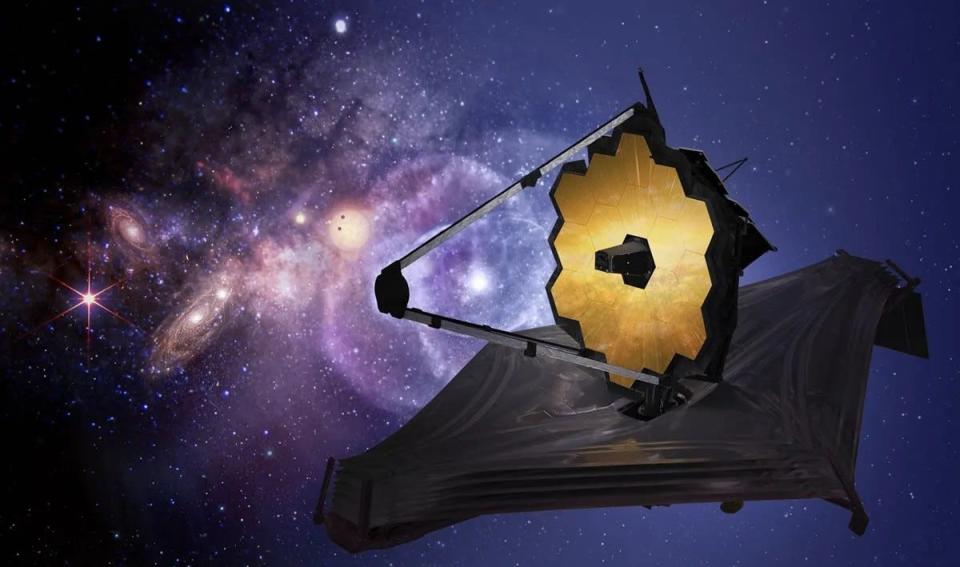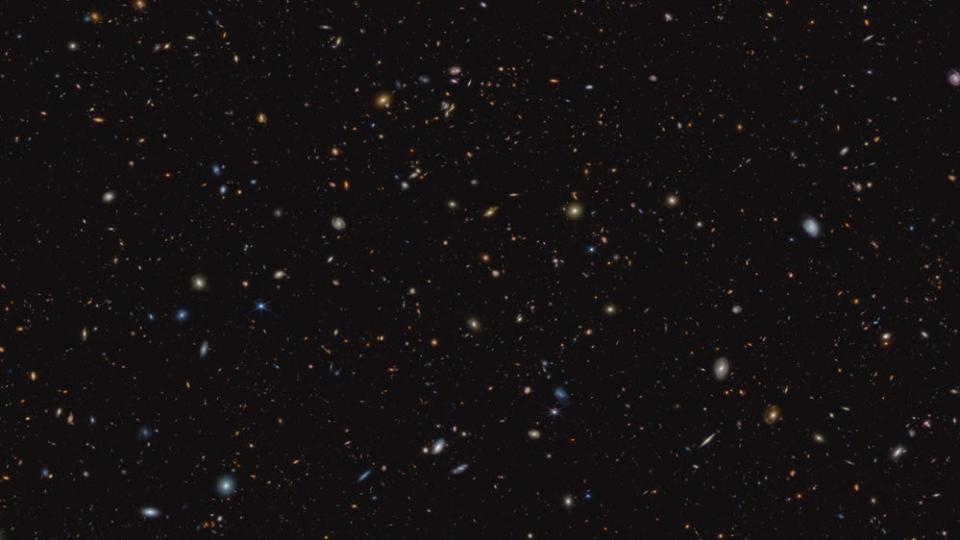NASA's Webb Space Telescope discovered 3 rare galaxies that can help astronomers study the cosmic dark ages
NASA's James Webb Space Telescope observed three galaxies in the universe's very early stages.
The galaxies were likely forming around when our universe was 400 million to 600 million years old.
Studying early galaxy and star formation helps astronomers better understand the cosmic dark ages.
NASA's James Webb Space Telescope detected three galaxies as they were likely forming during the universe's infancy, the space agency said Thursday.
Data from the telescope, which is about 1 million miles from Earth, showed these galaxies feeding on gas when the universe was only about 400 million to 600 million years old, NASA said in a press release.
That's extremely young by cosmological standards, since most astronomers agree that the universe is probably about 13.7 billion years old. In other words, these galaxies offer a rare glimpse of the universe in its infancy and an exciting opportunity for astronomers to learn more about what happened shortly after the Big Bang.
It's all thanks to the telescope's tremendous observing power. "Without Webb, we would not be able to observe these very early galaxies, let alone learn so much about their formation," Kasper Heintz, an assistant professor of astrophysics at the University of Copenhagen in Denmark, said in the press release.

Heintz is the lead author of a study on this latest Webb discovery.
The press release said the images of the galaxies from the telescope looked like "faint red smudges," so the researchers relied on other data, specifically patterns of colors known as spectra.
From that data, the team determined the presence of large quantities of gas around the galaxies that likely condensed to form young stars in the early universe.
The cosmic dark ages

Studying young stars in the early universe is important because it helps astronomers understand a crucial moment in cosmic evolution: when the universe went from opaque to transparent, like what we see now.
This is known as the Era of Reionization. If you'd lived in the universe before the Era of Reionization, you wouldn't have been able to observe distant stars and galaxies because gas all around you would have obstructed your view. For that reason, this period is often called the cosmic dark ages.
But about 1 billion years after the Big Bang, heat from stars and galaxies turned that opaque gas transparent. This is why we can see distant stars and galaxies in the night sky.
Astronomers study the Era of Reionization to understand the very early moments in our universe when galaxies and stars first formed. Webb's latest images of the three galaxies forming during the universe's infancy are so exciting because astronomers rarely witness galaxy formation so soon after the Big Bang.
"These galaxies are like sparkling islands in a sea of otherwise neutral, opaque gas," Heintz said.
The team published its results in the peer-reviewed journal Science this week.
Read the original article on Business Insider

